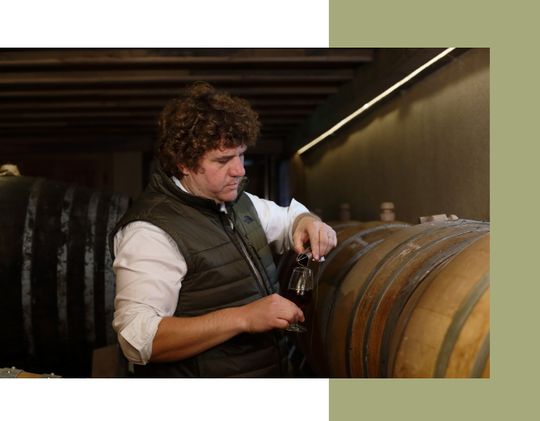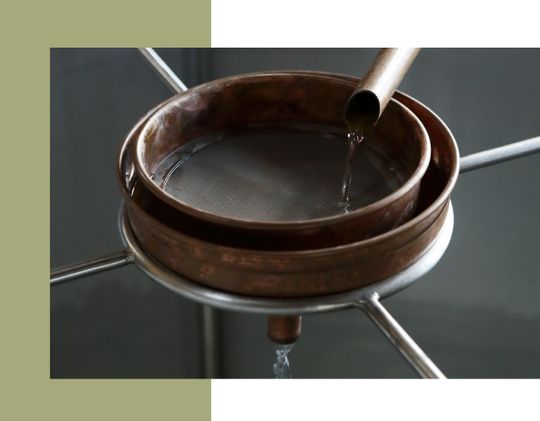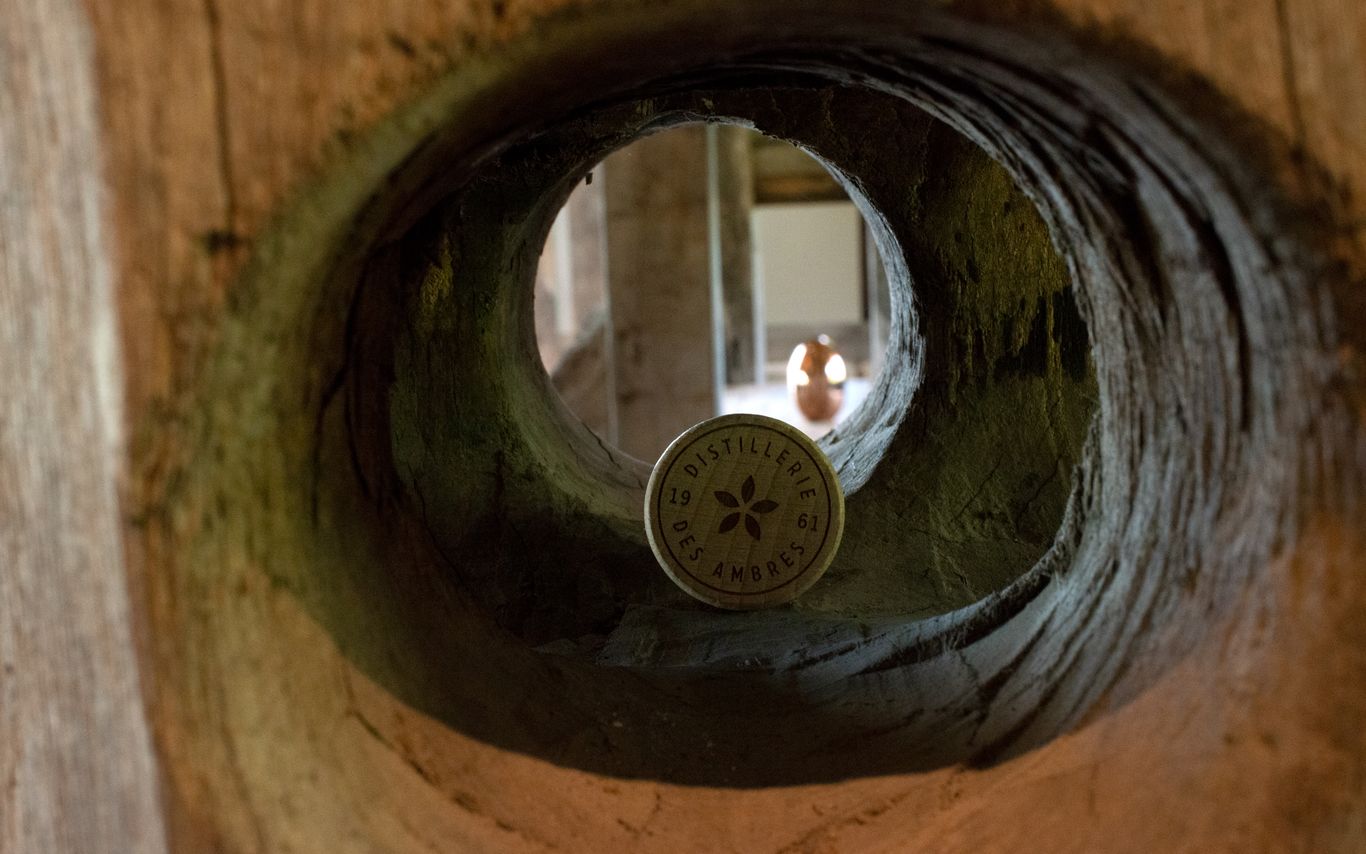SAVOIR-FAIRE
La Distillerie des Ambres
The art of the blend
At the Distillerie des Ambres, each of the steps to create a Calvados is guided by the cellarmaster, Kristen Paravisini. A native of the Pays d’Auge, he oversees the process from the apple to the final distillation and blending process, applying his deep understanding of the land, his experience, his expertise and his intuition to craft the final product.
The first step of the blending process is the pre-blend. Over a period of several months, the different brandies meld together and mellow. Next, the profile of each Calvados is carefully worked and carved out. Very subtly, the cellarmaster guides this evolution of the spirit, allowing time to reveal the power and delicacy, the structure and elegance, and the infinite complexity within. Finally, he is able to fulfil the original vision: a sublime, very present balance which unfolds like the landscape itself.

« How do you like them apples ? »
_
Matt Damon, Good Will Hunting, 1997
THE CIDER
Laying the aromatic foundations
In the Distillerie des Ambres’ orchards, animals roam among the apple trees and eat the first fruit to form - damaged or unripe fruit which falls early from the tree. These leave in mid-September, when the harvest begins. The harvest will last until December, following each variety as it ripens more quickly or more slowly. Several different varieties of apples are picked, then washed and crushed as quickly as possible before being packed into grids above a press. This crushed fruit is pressed slowly and carefully, and the remaining pulp is sent to farms for livestock feed. The must is clarified, racked off and poured into barrels which are kept away from the light and the heat.
Now begins the fermentation process. From start to finish, this will take between four and eight weeks until the fully dry cider has reached 6-7% alcohol and has used up all of its sugar. It is now ready to be distilled. For the Distillerie des Ambres, this step is particularly important : the must, and all of its ripe apple flavours and aromas, is the sole raw ingredient for the apple brandy. As such, they lay the foundations with which the cellarmaster can begin to craft his blend, much further down the line.
/https://distilleriedesambres.com/assets/uploads/pages/savoir-faire/_K2A2680.jpg)

APPLE BRANDIES
Working with age
Calvados from the Pays d’Auges must be distilled not once, but twice. The Distillerie des Ambres uses a « pot » still, with a capacity of 950 litres. The cider is poured into the boiler, where it is heated, and the alcohol-heavy vapours rise up and over into a coiled pipe, where they condense and are collected. This liquid is called « brouillis », and contains around 30% alcohol. It needs to be re-distilled, so is poured back into the boiler for a second run through, where the alcoholic vapours follow the same path. The heads and the tails (the liquid distilled at the very beginning and end) are rejected, and only the « hearts » - the true apple brandy, around 70% alcohol - is kept.
Each brandy made is then poured into oak barrels. The Distillerie des Ambres works with two cooperages in particular, chosen for their unique skills and expertise: one located in the Pays d’Auge for their traditional Norman 987 litre barrels, made from oak sourced from the Orne forests, and the other from Charentes, which produces Cognac oak barrels with a capacity of 350 to 400 litres. These brand new barrels are used to store young brandy for a relatively short time. It then goes into older barrels, which are better suited to the harmonious development of each Calvados’ aromatic palette without the dominating force of new oak. Over the years, the cellarmaster plays on the age and volume of the barrels to guide the subtle evolution of these brandies, helping them along until they reveal their full complexity. By carefully guiding them through the years, he can enhance the finesse and elegance of one spirit, round out the bouquet of another, improve the colour of a third, and so on...
/https://distilleriedesambres.com/assets/themes/dda/img/logo-green-text.jpg)
